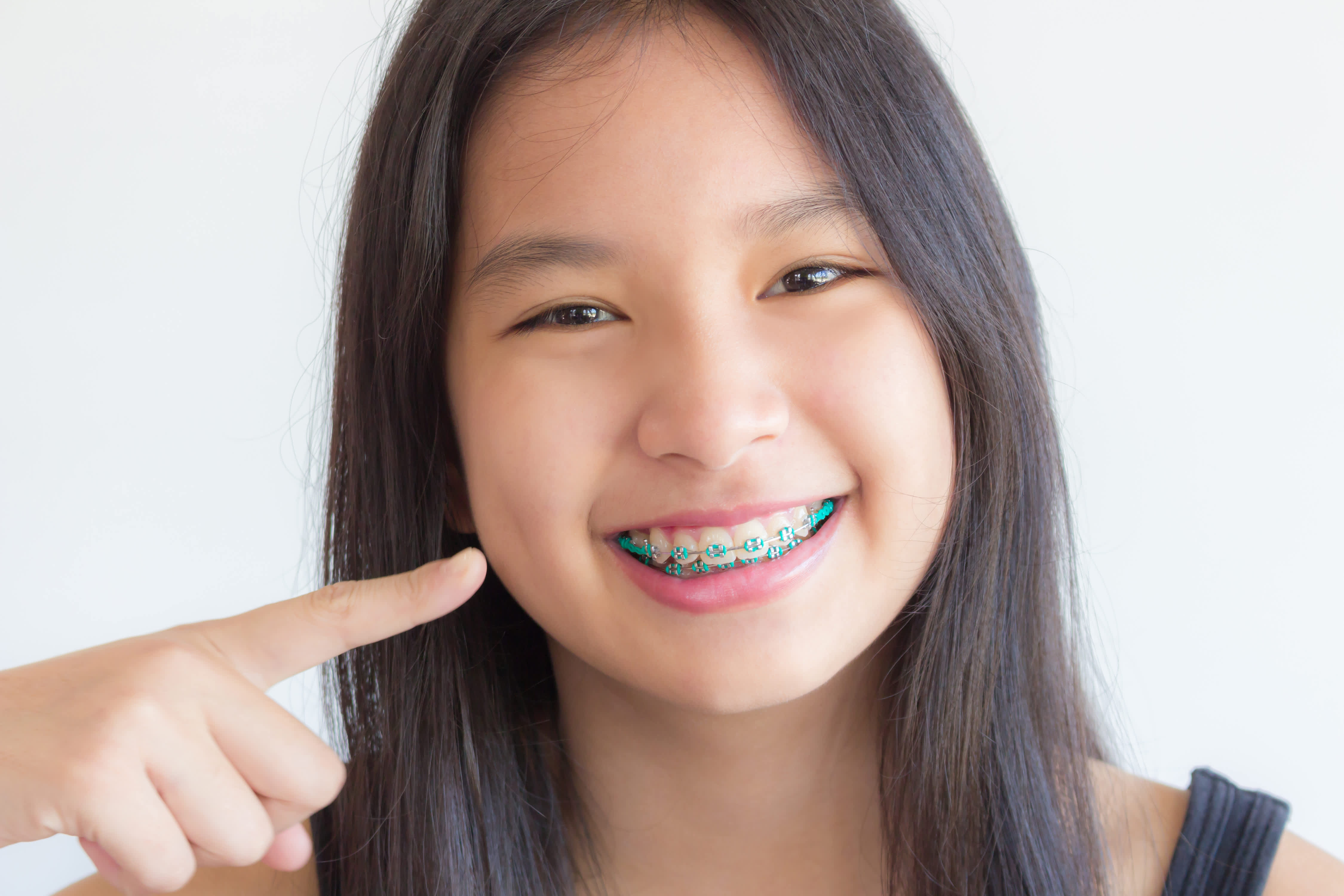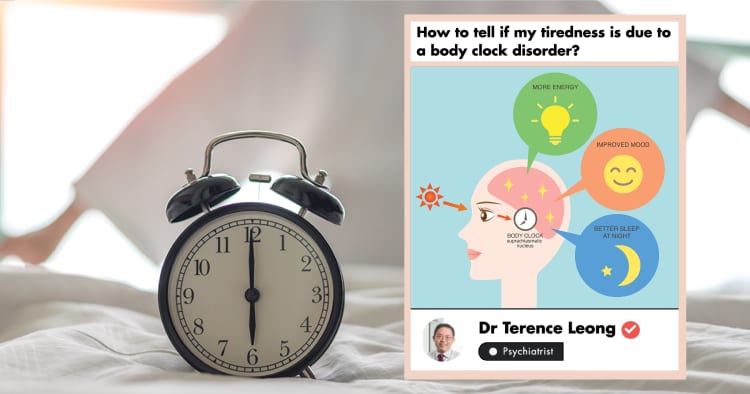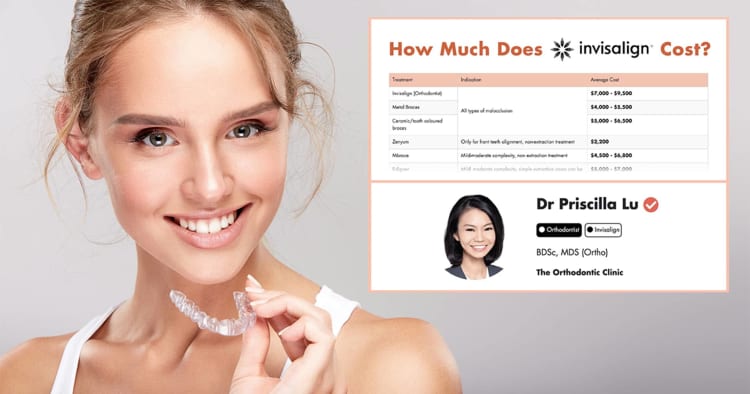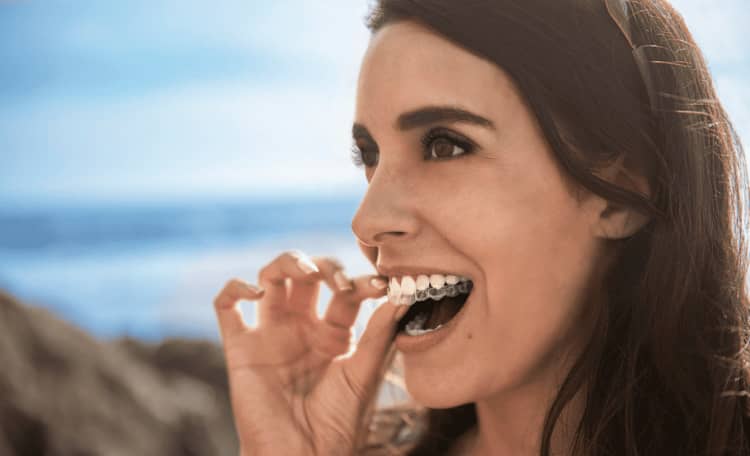People most likely get braces when they are teenagers. Getting braces can hep straighten teeth and heal some injuries or misalignments. Orthodontics is undergoing significant development thanks to technological advancements. These advancements influences the entire process of orthodontic treatment, for example diagnosis and planning [1] [2]. This has led to a wide range of treatments, so which one is right for you or your teen? Keep reading to find out!
Clear aligners
 Clear aligners are a way out for patients who look for more discreet orthodontic treatments than conventional braces because they do not use brackets or wires. They are a modern and almost invisible method for correcting mild to moderate orthodontic problems. They align teeth just like braces but they use transparent plastic, which makes them a popular choice for those who care about their orthodontic treatment.
Clear aligners are a way out for patients who look for more discreet orthodontic treatments than conventional braces because they do not use brackets or wires. They are a modern and almost invisible method for correcting mild to moderate orthodontic problems. They align teeth just like braces but they use transparent plastic, which makes them a popular choice for those who care about their orthodontic treatment.
They need more discipline to wear and if they are not worn properly, treatment progress may be compromised. Aligners have to be worn 20 to 22 hours per day to be effective and careful consideration needs to be given for how children and teens will cope with this routine.
Ceramic braces
 Ceramic braces are attached to each tooth and connected with an archwire which allows them to straighten up the teeth 24/7. Since teens will be wearing their braces 24/7, their teeth will move according to plan. Ceramic braces are a common alternative to clear aligners. They use tooth-coloured material.
Ceramic braces are attached to each tooth and connected with an archwire which allows them to straighten up the teeth 24/7. Since teens will be wearing their braces 24/7, their teeth will move according to plan. Ceramic braces are a common alternative to clear aligners. They use tooth-coloured material.
Lingual braces
 Lingual braces are identical to other braces in that brackets and wires are installed in the mouth and on the teeth to fix misalignments. Lingual braces differ in that they are almost completely invisible. They are put on the back of the teeth facing the tongue, rather than the front of the teeth.
Lingual braces are identical to other braces in that brackets and wires are installed in the mouth and on the teeth to fix misalignments. Lingual braces differ in that they are almost completely invisible. They are put on the back of the teeth facing the tongue, rather than the front of the teeth.
Lingual braces can be a good option for a teen who is self-aware of his or her smile but does not want traditional metal braces.
Self-ligating braces

Self-ligating braces are look-alike with conventional braces without ligature, which is an elastic or rubber that is wrapped around conventional braces. This means that there are no elastic or rubber bands or metal ties because they are not required. Special clips or brackets help you move your teeth in place. Patients with self-ligating brackets were always associated with less pain and discomfort [3].
Metal braces
 Metal braces continue to be considered the most popular type of orthodontic treatment recommended by an orthodontic specialist. They are useful when teeth need to experience significant movement which reversible, transparent aligners cannot achieve. When someone mentions braces, these are the braces that most people think of.
Metal braces continue to be considered the most popular type of orthodontic treatment recommended by an orthodontic specialist. They are useful when teeth need to experience significant movement which reversible, transparent aligners cannot achieve. When someone mentions braces, these are the braces that most people think of.
Metal braces are now lighter and more versatile than they used to be. Usually, an orthodontist will let the patient choose the colours they want for their ligatures, those rubber bands wrapped around each metal piece, leaving a little space for fun and creativity.
Growth modification appliance
 The procedure most widely used on younger patients. Growth enhancement procedures include the use of practical tools that can help correct those with overbite without actually removing any teeth. As its name implies, growth modification modifies the growth of the bone. That is why this treatment is used on teens and kids who are still developing and have more pliable bone tissue. Specifically, this treatment is used on those with an underlying jaw discrepancy due to genetics, trauma, or habit.
The procedure most widely used on younger patients. Growth enhancement procedures include the use of practical tools that can help correct those with overbite without actually removing any teeth. As its name implies, growth modification modifies the growth of the bone. That is why this treatment is used on teens and kids who are still developing and have more pliable bone tissue. Specifically, this treatment is used on those with an underlying jaw discrepancy due to genetics, trauma, or habit.
So which one is the best for your teen?
 Perhaps the best way to determine this is to discuss your options with an orthodontist you trust. After your orthodontist examines your child’s mouth, they can recommend what they think is best!
Perhaps the best way to determine this is to discuss your options with an orthodontist you trust. After your orthodontist examines your child’s mouth, they can recommend what they think is best!














